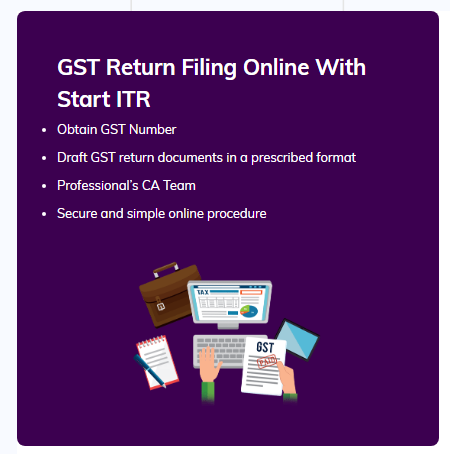In the realm of taxation, the Goods and Services Tax (GST) stands as a transformative system that unifies various indirect taxes in India. Filing GST returns is a critical aspect of compliance for businesses, and the advent of online platforms has significantly streamlined this process. This article provides a comprehensive guide to navigating the gst return online form, ensuring a seamless and hassle-free filing experience.
Understanding the Significance of GST Return Filing:
GST return filing is not just a legal obligation; it is a crucial means for businesses to report their sales, purchases, and tax liabilities accurately. Timely and accurate filing contributes to a transparent and efficient tax system, fostering trust between businesses and the government.
Navigating the GST Return Online Form:
- Accessing the GST Portal: Begin by logging into the official GST portal using your credentials. If you're a new user, complete the registration process to obtain a GST identification number (GSTIN).
- Selecting the Correct Form: The GST return forms vary based on the type of taxpayer and nature of business. Choose the appropriate form for your filing – whether it's GSTR-1 for outward supplies, GSTR-3B for monthly summary returns, or others based on your specific requirements.
- Entering Business Details: Provide accurate business information, including your GSTIN, legal name, trade name, and the applicable tax period. Ensure that these details match the information registered with the GST authorities.
- Inputting Sales and Output Liability (GSTR-1): If filing GSTR-1, enter details of your outward supplies, including sales invoices and the corresponding taxes. Ensure accurate classification and reporting of taxable, exempt, and non-GST supplies.
- Purchasing and Input Tax Credit (GSTR-2A and GSTR-3B): For GSTR-2A and GSTR-3B, reconcile your purchases with GSTR-2A data. Verify and claim input tax credit (ITC) on eligible invoices, ensuring compliance with input tax rules.
- Verification and Validation: Before submission, review all data for accuracy and completeness. Many online platforms have built-in validation checks to identify errors or discrepancies in the information provided.
- Payment of Taxes: If your return indicates any tax liability, make the payment through the integrated payment gateway. Ensure that the payment is made within the stipulated time to avoid penalties.
- Filing and Acknowledgment: Once all details are validated and payments made, file the return. The system generates an acknowledgment (ARN) upon successful filing, confirming compliance with the GST regulations.
You Can Also Visit Us : -
online gst return filing india
Conclusion:
Navigating the GST return online form is a pivotal step in ensuring compliance with the ever-evolving tax landscape in India. By embracing the convenience of online platforms, businesses can streamline the filing process, reduce errors, and contribute to the efficiency of the overall tax ecosystem. Stay informed about updates in GST regulations, leverage technology for accurate reporting, and make compliance a seamless part of your business operations. In doing so, you not only fulfill legal obligations but also pave the way for a transparent and accountable financial future.





Comments